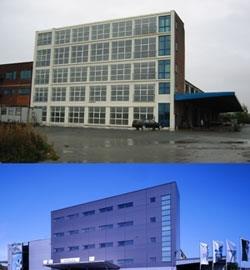The UK construction industry is often driven by short-term goals and objectives, with sustainability seen as an added cost rather than a way to save money in the long-term. Dr Graeme Peacock, Market Development Manager for Corus Colors, calls on the sector to consider how the way we build today will impact on future generations.
The challenge posed by climate change will dominate the 21st century and already dictates decisions made by world powers, in context of global politics right down to our day-to-day considerations. Despite this, building energy consumption continues to grow and now accounts for nearly half of that used in the UK. The construction industry needs to step up to its environmental responsibilities and adopt a ‘whole-life’ approach to developments in the public and private sector. It is not good enough to simply consider how materials are manufactured when the construction process, building occupation and life cycle have a huge effect on the environment.
In particular, construction and demolition activities in the UK generate more than 90 million tonnes of waste each year, with much of it destined for our overflowing landfills. Steel is 100 per cent recyclable so when a building envelope comes to the end of its useful life, the recycled pre-finished material can be diverted away from the waste stream. Other effective options include re-use by careful removal of cladding to enable the building envelope to be used over again elsewhere, most typically for agricultural applications. After all, more than 90 per cent of steel incorporated in construction is re-used or recycled at the end of a building life.
Equally, pre-finished steel cladding lends itself well to prolonging a building’s life through refurbishment. With guarantees now extending to 30 years, maintenance is an infrequent event. But there are plenty of examples of well maintained steel clad buildings lasting for several decades. This of course is re-use of the building fabric in its truest sense. It is also a lesson in optimising resources.
For more information on sustainable construction visit http://www.colorcoat-online.com/en/building_in_the_environment/sustainability/

























No comments yet